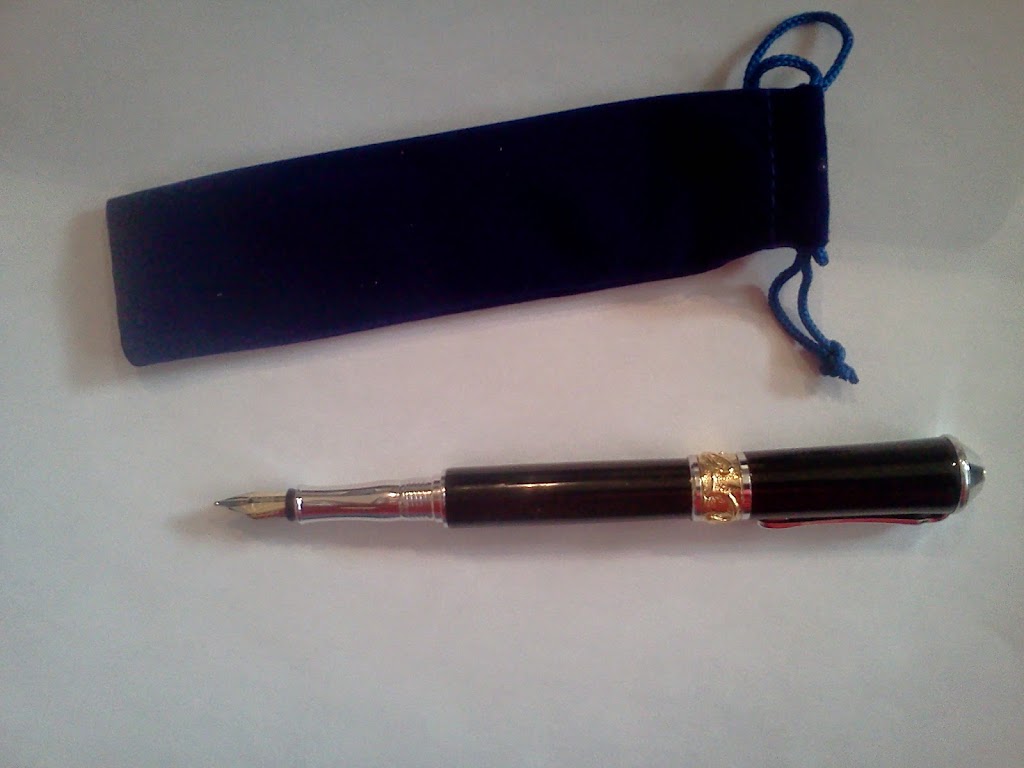James Scott Bell
@jamesscottbell
Category Archives: fountain pen
The Power of the Pen
by John Gilstrap
I knew from an early age that I was something of a dork, even though we didn’t really have “dorks” in the ’60s and ’70s. Come to think of it, I’m not sure what the label was back then, but we did have a “popular” crowd, and I was smart enough to know that it would forever thrive without me. Even at the time, I was cool with that because, armed with a talent to write stories, the slights of the real world were merely launching places for the victories of my imagination.
An undeniable symptom of my latent dorkdom was—and continues to be—my love of pens. It started with the old reliable clear-barreled Bic. The one with the blue cap (never black; no sir, not on paper with my handwriting), and the little blue plug on the ass end. The one with the little air hole halfway down the barrel so you could get the clear plastic filler in and out. You with me?
Did you know that if you look at the nose of the cap from a shallow angle, just off from head-on, you’ve got a perfect replica of a fighter jet’s canopy? Think Vietnam-era F4 Phantom. On the nose itself, there’s a little nib that is in fact a cannon that the F4 never had in real life yet always had when little Johnny Gilstrap was at the controls. If you take the cap off entirely, you’ve got a rocket ship.
If your fingernails were long enough (mine rarely were), and you had enough patience, you could work that plug out of the back of the barrel to create the kind of whistle that will drive a teacher crazy. If you pull the filler out completely, the pen’s barrel becomes a perfect spitball gun; but only if you blow into the narrow end. If you do it the other way, you risk a jam. Of course, you could avoid the jam entirely if you make really tiny spit balls, but the sacrifice in mass is directly reflected in impact velocity, and who’d want to make that kind of sacrifice? And remember to cover the air hole before you blow.
The filler itself was of limited use, in my experience, although it was mildly amusing to use the pen barrel as a rolling pin down the length of the flexible plastic ink tube. Those little things hold an astonishing amount of ink. Oh, and hats off to whoever designed the dye used in the red Bic pen; it’s an excellent stand-in for blood when your GI Joe takes a bullet for his men. Note to children everywhere: If you leave a bunch of red ink-soaked Kleenexes in your bathroom trash can, you will have a discussion with your mother. I’ve learned, so you don’t have to.
Have you ever watched a ballpoint pen do its job? I mean, have you ever really watched it? Next time you find yourself with a pen and a magnifying glass—and who among us has not?—take a 3X gander at the way the ball spreads the ink. It just doesn’t get cooler than that.
I believe I was in fourth grade when I wrote with my first fountain pen. Actually, by way of full disclosure, it was a cartridge pen—Papermate, I think—with a silver cap and a translucent blue barrel which screwed off of the nib. What I remember most about that pen—apart from the fact that the nib assembly looked an awful lot like a microphone for a Man From U.N.C.L.E. spy radio (“Open channel D Please”)—was the first assignment on which I got to use it.
I had the hots for Mrs. Lippincott as it was, and the fact that she liked students who liked to write made her even hotter. She was always looking for ways to inspire me to write stories. (I suppose it’s possible she was trying to inspire all of us, but I always preferred to think she was speaking directly—and only—to me.) At Halloween that year, she arranged our desks in groups of four, turned off the lights, pulled the blinds and put a single candle in the middle of each square of desks. Our assignment was to write a scary story.
I wrote like a madman (madkid?). Words flew from the nib of that old-fashioned pen. In my mind, I had something in common with Edgar Allen Poe and Charles Dickens as action and characters spilled from the pen like so much blood from a wound. I entered my first writing “zone” that day. I don’t remember the events of the story, but I remember like it was yesterday the opportunity to read my imagination to the class. I remember the silence as my words captured them. I remember feeling that for once, I had an edge on kids whose greatest gift was the ability to throw a ball.
I don’t want to go all weird here, but I believe that all good art carries with it an element of its creator’s soul. That’s the X-Factor the seals an emotional connection with the audience. For me, the computer keyboard takes me where I need to go 95% of the time. For the remaining 5% of the writing I still resort to my secret weapon—the fountain pen. It might propel me for three pages, or maybe for thirty, but my pen has never let me down.

